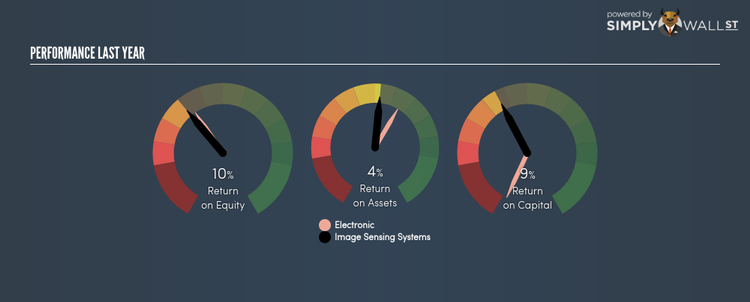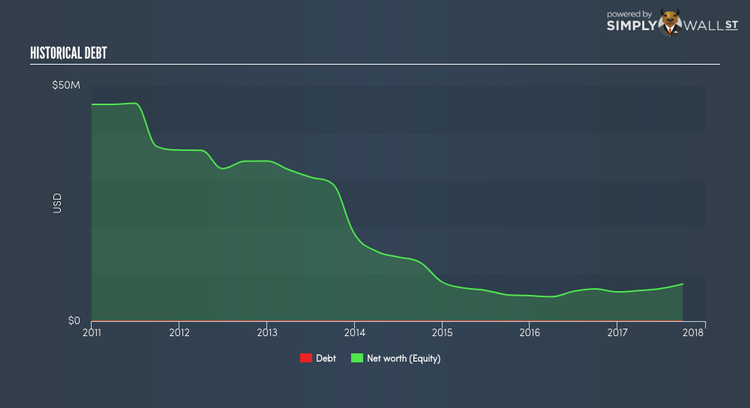Why Image Sensing Systems Inc’s (NASDAQ:ISNS) ROE Of 9.59% Does Not Tell The Whole Story

Image Sensing Systems Inc’s (NASDAQ:ISNS) most recent return on equity was a substandard 9.59% relative to its industry performance of 10.53% over the past year. ISNS’s results could indicate a relatively inefficient operation to its peers, and while this may be the case, it is important to understand what ROE is made up of and how it should be interpreted. Knowing these components could change your view on ISNS’s performance. Metrics such as financial leverage can impact the level of ROE which in turn can affect the sustainability of ISNS’s returns. Let me show you what I mean by this. View our latest analysis for Image Sensing Systems
What you must know about ROE
Return on Equity (ROE) weighs Image Sensing Systems’s profit against the level of its shareholders’ equity. For example, if the company invests $1 in the form of equity, it will generate $0.1 in earnings from this. In most cases, a higher ROE is preferred; however, there are many other factors we must consider prior to making any investment decisions.
Return on Equity = Net Profit ÷ Shareholders Equity
Returns are usually compared to costs to measure the efficiency of capital. Image Sensing Systems’s cost of equity is 9.30%. Some of Image Sensing Systems’s peers may have a higher ROE but its cost of equity could exceed this return, leading to an unsustainable negative discrepancy i.e. the company spends more than it earns. This is not the case for Image Sensing Systems which is reassuring. ROE can be split up into three useful ratios: net profit margin, asset turnover, and financial leverage. This is called the Dupont Formula:
Dupont Formula
ROE = profit margin × asset turnover × financial leverage
ROE = (annual net profit ÷ sales) × (sales ÷ assets) × (assets ÷ shareholders’ equity)
ROE = annual net profit ÷ shareholders’ equity
The first component is profit margin, which measures how much of sales is retained after the company pays for all its expenses. Asset turnover reveals how much revenue can be generated from Image Sensing Systems’s asset base. The most interesting ratio, and reflective of sustainability of its ROE, is financial leverage. Since financial leverage can artificially inflate ROE, we need to look at how much debt Image Sensing Systems currently has. Currently, Image Sensing Systems has no debt which means its returns are driven purely by equity capital. This could explain why Image Sensing Systems’s’ ROE is lower than its industry peers, most of which may have some degree of debt in its business.
What this means for you:
Are you a shareholder? Even though ISNS returned below the industry average, its ROE comes in excess of its cost of equity. Since ROE is not inflated by excessive debt, it might be a good time to add more of ISNS to your portfolio if your personal research is confirming what the ROE is telling you. If you’re looking for new ideas for high-returning stocks, you should take a look at our free platform to see the list of stocks with Return on Equity over 20%.
Are you a potential investor? If you are considering investing in ISNS, basing your decision on ROE alone is certainly not sufficient. I recommend you do additional fundamental analysis by looking through our most recent infographic report on Image Sensing Systems to help you make a more informed investment decision.
To help readers see pass the short term volatility of the financial market, we aim to bring you a long-term focused research analysis purely driven by fundamental data. Note that our analysis does not factor in the latest price sensitive company announcements.
The author is an independent contributor and at the time of publication had no position in the stocks mentioned.


